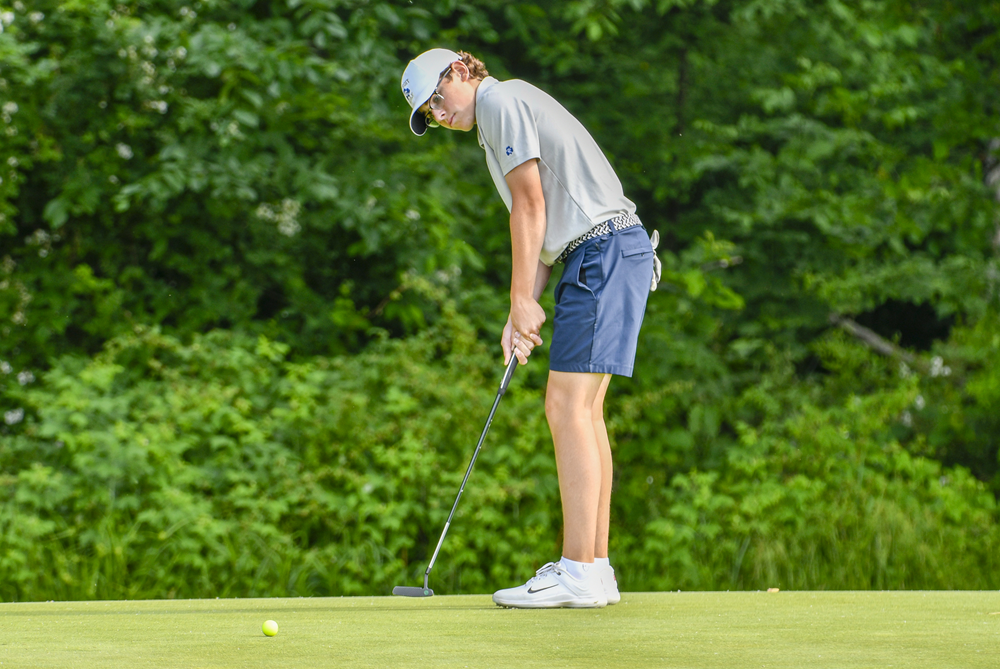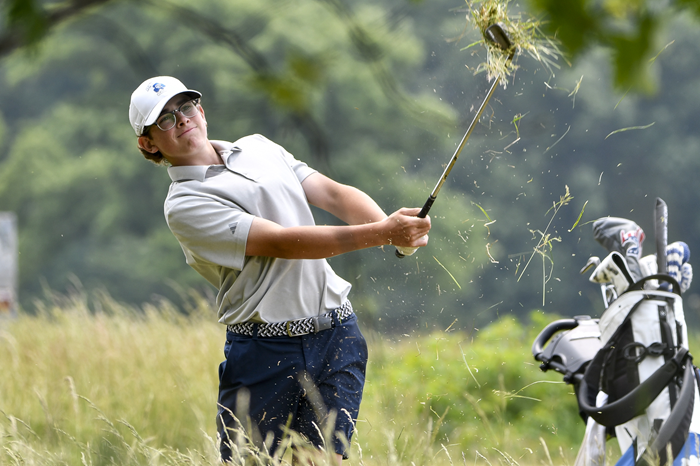
Casting Lines for Future Tournaments
August 12, 2016
By Jack Roberts
MHSAA Executive Director
The MHSAA is best known to the public for the tournaments it conducts to conclude the fall, winter and spring seasons each school year.
These tournaments, the first and largest program of the MHSAA, have survived the Vietnam War, the Korean conflict and two World Wars. They have survived the technology bubble, the housing collapse, the energy crisis and the Great Depression.
MHSAA tournaments existed at the dawn of aviation and at the time of our nation’s lunar landing. Popes, presidents and governors have changed and changed again and again, and MHSAA tournaments roll on year after year.
But the sense of tradition and permanence and inevitability of MHSAA tournaments doesn’t dissuade us from asking questions about our tournaments, even some of the most basic questions. Here are two.
Question #1
I have long been and will always be an advocate for a Ryder Cup format for the MHSAA Golf Finals, and a team tennis approach to the MHSAA Tennis Finals; but 90 years of tradition is hard to overcome. Might this be a more exciting format? Could it be co-ed? Could it reverse the decline in boys tennis participation, and increase girls golf participation? Wouldn’t it be fun to try?
Periodically, the International Olympic Committee requires each of the designated Olympic sports to defend its status, to state its case why the sport should remain a part of the Olympic program. Then, after a series or votes that retain one sport at a time, the IOC drops the sport that makes the weakest case. It does so to make room for one of the previously unlisted sports that makes the best case for inclusion.
This would appear to keep the existing Olympic sports on their toes, and to keep the Olympic movement fresh and reflective of modern trends in sports.
While I would not enjoy the controversy, I can see the potential for some positive results if the MHSAA were to invoke the same policy for determining the 14 tournaments it will provide for girls and the 14 for boys.
This might cause us to consider more deeply what a high school sport should look like, or at least what an MHSAA tournament sport should stand for.
On the one hand, we might be inclined to drop tournaments for those sports that involve mostly non-faculty coaches and non-school venues, or require cooperative programs to generate enough participants to support a team, or resort almost entirely to non-school funding, or cater to individuals more than teams.
Or perhaps this process would cause policymakers to forget traditional thinking and ask: “In this day and age, should we shake off traditional notions of sport and consider more where modern kids are coming from?” That might mean fewer team sports and more individual sports, more “extreme” sports like snowboarding and skateboarding, and more lifetime sports, meaning not just golf and tennis and running sports, but also fishing and even shooting sports.
Currently, MHSAA policy states that the MHSAA will consider sponsorship of a tournament series for any sport which 64 member schools conduct on an interscholastic basis as a result of action by the governing boards of those schools.
Should the only question be how many schools sponsor a sport, or must an activity also have certain qualities and/or avoid certain “defects?” What should an MHSAA tournament sport look like and stand for?
Question #2
Bristling from criticism that his association is a money-grabbing exploiter of children, my counterpart in another state said, “If we were running our programs just to make money, we would do very many things very differently.” I knew exactly what he meant.
Because we care about the health and welfare of students, because we mean what we say that the athletic program needs to maximize the ways it enhances the school experience while minimizing academic conflicts, and because we try to model our claim that no sport is a minor sport when it comes to its potential to teach young people life lessons, we operate our programs in ways that make promoters, marketers and business entrepreneurs laugh, cry or cringe.
If money were the only object, we would seed and select sites to assure the teams that attracted the most spectators had the best chance to advance in our tournaments, regardless of the travel for any team or its fan base. If money were the only object, we would never schedule two tournaments to overlap and compete for public attention, much less tolerate three or four overlapping events. If money were the only object, we would allow signage like NASCAR events and promotions like minor league baseball games.
Those approaches to event sponsorship may not be all wrong; they’re just not all right for us. And we will live with the consequences of our belief system.
During a typical school year, more than 20 percent of the MHSAA’s 2,097 District, Regional and Final tournaments lose money. Not a single site in golf, skiing or tennis makes a single penny. In no sport did every District, Regional and Final site have revenue in excess of direct expenses.
In fact, in only three sports – boys and girls basketball and football – is revenue so much greater than direct expenses overall that it helps to pay for all the other tournaments in which the MHSAA invests.
That’s right: invests. When we present our budget to our board, we talk about the MHSAA’s investment in providing tournament opportunities in all those sports and all those places that cannot sustain the cost of those events on their own. How much is this investment worth to students, schools and society?
These two are core questions that require our focus far in advance of talk about scheduling, site selection, seeding and the myriad matters that too often hijack our time and attention.

Back to Full Strength, Menser Eager to Show Full Talent with Title Pursuit
By
Keith Dunlap
Special for MHSAA.com
June 6, 2024
For a while this spring, Detroit Catholic Central senior golfer Julian Menser probably wondered if he was going to be spending more time in the hospital than on the golf course.
 Up until the initial days of May, Menser had a terrible bout of mononucleosis, and treatment days were more common than sessions on the driving range or putting green.
Up until the initial days of May, Menser had a terrible bout of mononucleosis, and treatment days were more common than sessions on the driving range or putting green.
“After I was done with the symptom part, I would be out practicing and I’d all of a sudden get hit with random fatigue,” said Menser, who said he also suffers from asthma. “It would hijack what I was trying to get done.”
Fortunately, it appears as if his senior season will have a happy ending after the slow start.
Menser is not only healthy, but is playing superb golf heading into this weekend’s Lower Peninsula Division 1 Final at Bedford Valley in Battle Creek.
The happiest conclusion would be for Menser to close his high school career with an individual championship – and the way he’s been playing, it’s quite possible.
On May 15 at the Oakland County tournament, Menser fired a 7-under par round of 65 at Fieldstone Golf Club in Auburn Hills to win the medalist honor going away.
Last week in his Regional tournament at Twin Lakes, Menser shot a 6-under par round of 66 to win the medalist honor and lead the Shamrocks to the team title.
Signed to play next for Michigan State, Menser is rightfully full of confidence.
 “I’m playing well, but I just try to look at it that golf can change and how you are playing can change every single morning when you wake up,” Menser said. “I don’t really look at it as, ‘I shot this then’ or ‘I played this well here.’ I don’t really look at it like that. I just kind of look at it as coming into this tournament it means a lot to me, and the team wants to win. I just prioritize that.”
“I’m playing well, but I just try to look at it that golf can change and how you are playing can change every single morning when you wake up,” Menser said. “I don’t really look at it as, ‘I shot this then’ or ‘I played this well here.’ I don’t really look at it like that. I just kind of look at it as coming into this tournament it means a lot to me, and the team wants to win. I just prioritize that.”
Menser hopes to also rebound from what was a disappointing result by his expectations at last year’s MHSAA Tournament.
After finishing eighth individually two years ago as a sophomore, Menser couldn’t crack the top 10 last season.
“I didn’t really play how I wanted to play last year,” Menser said. “I honestly felt like I let the guys down on the team last year. I felt good going into last year. I just didn’t execute how I was trying to or play like I was trying to. But that’s golf.”
Menser has been on varsity since his freshman year, and Catholic Central head coach Mike Anderson said it’s hard to tell what has grown more, his game or his body.
Anderson said Menser has grown about seven inches since his freshman year, which is allowing him to hit the ball a ton now in addition to having an outstanding short game, putter and intelligence around the course.
“He’s very mature for his age,” Anderson said. “He’s got great golf mechanics. He thinks his way around the course well. He’s a fantastic young man. Very smart.”
Menser will have a busy summer circuit before heading to MSU, where he hopes to follow in the footsteps of past Catholic Central golfer James Piot by having an unforgettable career with the Spartans.
Piot also became well-known when he won the U.S. Amateur and played on the LIV Golf tour.
“I think those footsteps are ones that anyone would want to follow in,” Menser said.
 Keith Dunlap has served in Detroit-area sports media for more than two decades, including as a sportswriter at the Oakland Press from 2001-16 primarily covering high school sports but also college and professional teams. His bylines also have appeared in USA Today, the Washington Post, the Detroit Free Press, the Houston Chronicle and the Boston Globe. He served as the administrator for the Oakland Activities Association’s website from 2017-2020. Contact him at [email protected] with story ideas for Oakland, Macomb and Wayne counties.
Keith Dunlap has served in Detroit-area sports media for more than two decades, including as a sportswriter at the Oakland Press from 2001-16 primarily covering high school sports but also college and professional teams. His bylines also have appeared in USA Today, the Washington Post, the Detroit Free Press, the Houston Chronicle and the Boston Globe. He served as the administrator for the Oakland Activities Association’s website from 2017-2020. Contact him at [email protected] with story ideas for Oakland, Macomb and Wayne counties.
PHOTOS (Top) Detroit Catholic Central’s Julian Menser putts during last season’s Lower Peninsula Division 1 Final. (Middle) Menser sends a shot out of the deep rough at The Meadows at Grand Valley State. (Click for more from High School Sports Scene.)

